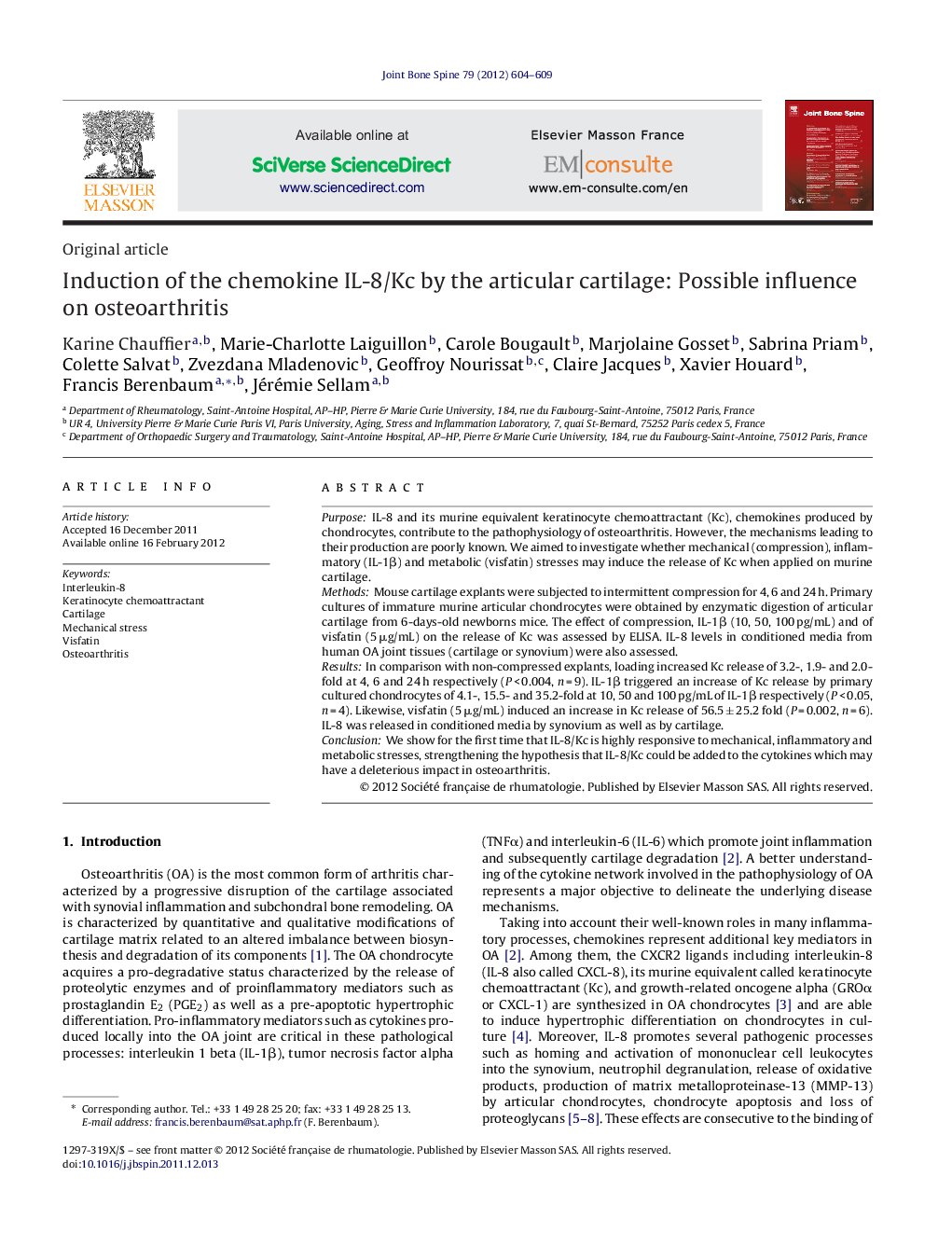| Article ID | Journal | Published Year | Pages | File Type |
|---|---|---|---|---|
| 3366271 | Joint Bone Spine | 2012 | 6 Pages |
PurposeIL-8 and its murine equivalent keratinocyte chemoattractant (Kc), chemokines produced by chondrocytes, contribute to the pathophysiology of osteoarthritis. However, the mechanisms leading to their production are poorly known. We aimed to investigate whether mechanical (compression), inflammatory (IL-1β) and metabolic (visfatin) stresses may induce the release of Kc when applied on murine cartilage.MethodsMouse cartilage explants were subjected to intermittent compression for 4, 6 and 24 h. Primary cultures of immature murine articular chondrocytes were obtained by enzymatic digestion of articular cartilage from 6-days-old newborns mice. The effect of compression, IL-1β (10, 50, 100 pg/mL) and of visfatin (5 μg/mL) on the release of Kc was assessed by ELISA. IL-8 levels in conditioned media from human OA joint tissues (cartilage or synovium) were also assessed.ResultsIn comparison with non-compressed explants, loading increased Kc release of 3.2-, 1.9- and 2.0-fold at 4, 6 and 24 h respectively (P < 0.004, n = 9). IL-1β triggered an increase of Kc release by primary cultured chondrocytes of 4.1-, 15.5- and 35.2-fold at 10, 50 and 100 pg/mL of IL-1β respectively (P < 0.05, n = 4). Likewise, visfatin (5 μg/mL) induced an increase in Kc release of 56.5 ± 25.2 fold (P = 0.002, n = 6). IL-8 was released in conditioned media by synovium as well as by cartilage.ConclusionWe show for the first time that IL-8/Kc is highly responsive to mechanical, inflammatory and metabolic stresses, strengthening the hypothesis that IL-8/Kc could be added to the cytokines which may have a deleterious impact in osteoarthritis.
